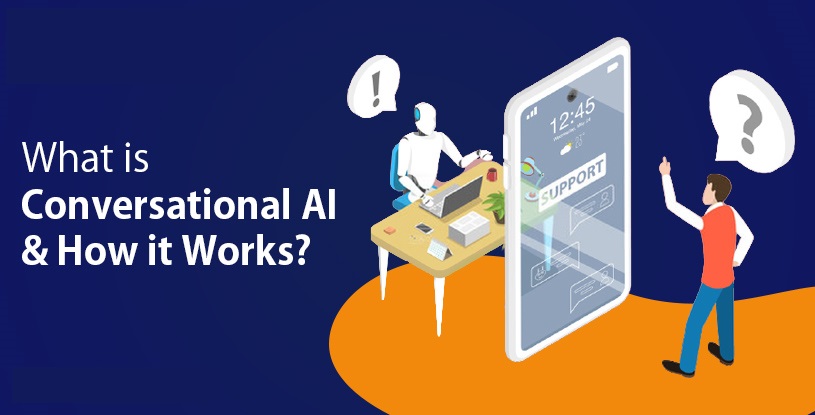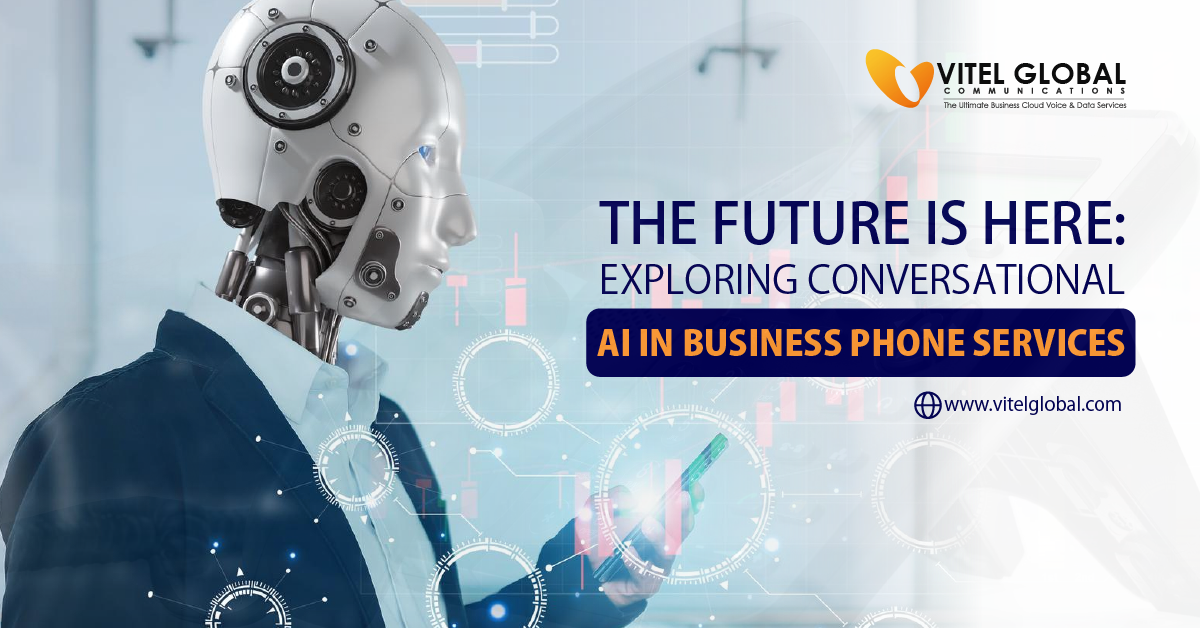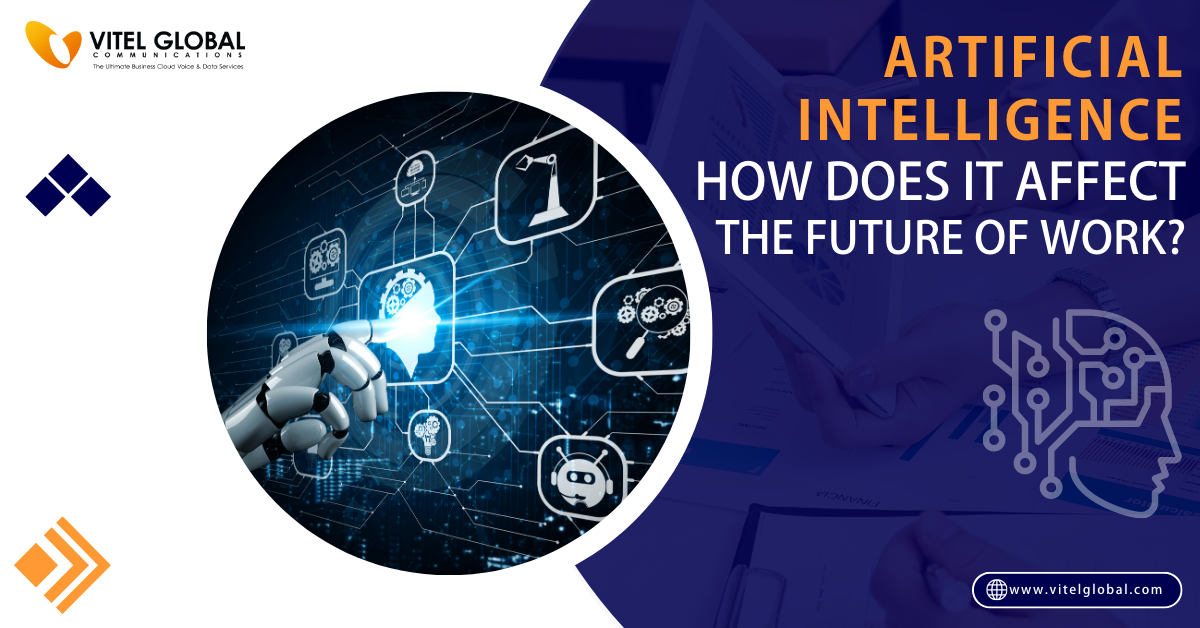What is Conversational AI and How it Work?

6 min read
“AI is going to change the world.” That’s the general sentiment that most people seem to share these days. Although, what exactly is Artificial Intelligence? What does it look like in action? And, most importantly, how do we make it?
When it comes to Conversational AI’s effect on modern businesses. Here let us understand its role or how it can affect their business operations. This blog is to provide a thorough overview of the concept so that businesses can decide if it is something worth implementing.
We’ve seen how it is implementing in large companies. In these examples, AI with human input creates an automation system that helps run companies efficiently.
What is Conversational AI?
Conversational AI is commonly referred to as Artificial Intelligence, or either of its many variations. It is very similar to other forms of AI, such as Machine Learning and Natural Language Processing, but since it only uses human input and interactions with machines, it differs slightly in that respect.
It has become much more prevalent in today’s world because it helps people understand the capabilities of machines that speak like humans and interact with them accordingly. AI in Business Phone Services differs from traditional computer-based and software-based AI in that it involves the use of conversation between humans and machines.
Works by having humans interact with virtual agents via online chat and text messages which translate into actions or decisions by machines who take care of large workflows for businesses.
It is a comprehensive term that refers to all of these technologies working together in harmony for the purpose of having natural conversations with machines. It will become increasingly important as we move into our AI-powered future, making tasks such as bookings, payments, and customer service much easier and more efficient.
Conversational AI is the intelligent chat that artificial intelligence platforms such as Google Home carry out. The user instructs the system to carry out a request or task. Then, based on natural language rules and an understanding of what was said, the system will respond with relevant information. It can be associated with Future of work technologies such as machine learning and natural language processing.
At first, it might seem like something that is impossible to program. However, it comes down to several different approaches.
AI and Conversational AI
Before learning about conversational AI terminology let us see what is AI stands for? AI means artificial intelligence is the ability of a computer to perform all the tasks which require human intelligence for execution. Conversational AI is the latest software that helps in chatting humans and computers and makes them work together designed in such a way that is more accurate in prediction for complex and predefined processes.
- Helps in making the users understand the results better by taking advanced actions in fewer steps thus resolving complex processes in simple steps.
- Learns the complex processes via patterns used in the previous Conversation with every individual
- Uses the existing data of the customers store dinner databases and retrieves the data whenever required
Integrates business operation tools and results in complex processes like human decision-making.
Types of Conversational AI
Conversational AI gets connected with humans in two ways: human-to-machine interaction and human-to-human interactions.
- Conversational AI personal assistants: They answer the general queries asked by the individual using smartphones, android phones, and Business IP Phones.
- Conversational AI delivering customer service: These AI’s help business in handling customer queries through apps, or websites without human interaction.
- Conversational AI used for internal interactions: AI’s are used for arranging internal meetings in the organizations depending upon the scheduled calendar.
How it Works?
Conversation AI is the quickest and reliable software acting using AI assistant tools used for retrieving the previous data or chats stored and implemented for further required actions increasing the efficiency of the processes compared to human actions.
- Conversational AI performs automation over the processes end to end resulting in consistent and reliable results.
- Conversational AI gets the result in a few steps compared to the human intervention results.
- Implements self-learning tools integrated with the software already.
Provides service at any time, and works 24*7. - Delivers streamlined service.
- Saves operational costs
Components of Conversational AI
Inputs: It is the data provided by the customers using the AI bot for interaction using different formats:
- Direct input is given where interaction happens by texting the messages.
- Voice input is given by speaking out which is less secure
ASU stands for automated speech recognition used to listen to voice queries - NLP means natural language processing used for dividing the voice inputs into shapes and sentences so that AI easily understands and cracks the puzzle.
- NLG stands for natural language generation manages and operates on the databases like CRMs for quick responses.
- TTS is the acronym for text to the speech where machine-generated voice will be delivered as a response to the customer queries.
Where Can be Implemented?
Any business is said to be successful when they concentrate majorly on factors like delivering customer service, marketing, advertising, and management. These three factors can implement conversational Artificial Intelligence to be more effective and efficient in their services.
- Customer service implementing conversational Artificial Intelligence helps in resolving customer issues such as password resetting, tracking, and monitoring the business products and other issues by retrieving the data from the previous calls.
- Used for marketing purposes that mainly focus on generating the leads. Converting the leads, understanding the customer needs to be stored in databases securely.
- Conversational AI implemented in administration and management used for the internal meeting setup, language translations. Generating transcripts regarding the internal meetings, and other tasks that need to be managed through the calls.
- In business process management, conversational Artificial Intelligence is implemented for analyzing, optimizing, and iterating the processes.
Used for integrating end-to-end operations in processes.
What Does Conversational AI Include?
Conversational Artificial Intelligence software success is contributed by major technologies like:
- AI means artificial intelligence technologies make understand the interactions on a deep level.
- Integrations or APIs are used for integrating the existing data applications with the customer interactions and performing end-to-end actions.
- NLU stands for natural language understanding is implemented for learning new responses by browsing synonyms and applying the pre-defined rules for resolving the queries in the faster way possible.
- Machine learning
- Deep learning
Digital transformation and upgrading the software in the business processes like integrating conversational Artificial Intelligence. Find useful in lowering the operational and labor costs regardless of the field implementing and executing the advanced technologies.
Types
Natural Language Processing (NLP)
This means the machine understands human language. For example, the system uses speech recognition. The process of translating a human language into a machine language. Also, know as building an interface for the computer so that they can understand what you’re saying. The idea behind this approach is that machines can generate responses without programming by hand on a specific problem or type of scenario.
Natural Language Processing is the science of understanding a human language. It is the capability of a computer program to understand the words humans are saying and create meaning from them. A natural language processor has two main parts: syntax and semantics. Syntax breaks down sentences into fragments while semantics tries to determine the literal meaning of these fragments.
Conversational AI uses natural language processing and machine learning algorithms to decipher users’ speech or text input in order to provide its users with insights on what they are saying or asking for. These could be answers to a given question, recommendations for different options, or even an automated response.
Natural Language Understanding (NLU)
This is when machines figure out how to respond to specific questions by using data provided by humans and then match this data with the question in order to answer it appropriately.
Natural Language Generation (NLG)
This is an artificial intelligence technique that allows machines to mimic human language expressions autonomously. This usually involves the use of algorithms that generate text and speech in response to human input and actions.
Artificial Intelligence
AI is based on statistical analysis, knowledge representation, reasoning and learning all the things that make computers act as humans.
Machine Learning
ML is the science of getting computers to “learn” how to do things by analyzing data without being programming explicitly. It also encompasses any kind of artificial intelligence such as coding a solution, algorithms over time from experience and data.
This is one of the most basic forms of artificial intelligence wherein results are time based on data observation. Machine learning is effectively focuses by businesses in order to improve engagement with customers. Machine learning analyzes huge amounts of data and its inferences that enable the creation of NLP programs. Understands human speech or text input better over time, without writing the program every time by hand.
It is the addition of human intelligence capabilities to computers or software. Moreover, AI is not just about one specific type of functionality but rather it will be useful for many different purposes that include: speech and image analysis, problem-solving, planning, knowledge representation and display, learning methods (for themselves or for humans), communication abilities, reasoning ability, and autonomous behavior.
Intent Recognition
Intent recognition is another critical component of Conversational AI. It enables the system to determine the user’s goal or task, even if they provide erroneous input.
Dialog Management
Prioritizing between individual requests is another key aspect of dialog management. Without being able to do this, you’ll end up with an infinite loop of questions and answers, or a situation where one user’s request will override another’s because they ask in a different order or at a different time.
Natural Language Generation
Natural language generation refers to technologies that allow systems to respond to queries and prompts in a more conversational way. This is possible through the use of chatbots, email response templates, or voice assistants.
Rule-based Systems
The process of building a decision tree (or set of rules) to guide the responses. The idea is that the machine will look at its rules and choose the right response based on context or by following a decision tree.
We can already see how these advancements are reshaping every industry from manufacturing to distribution and customer support. The next five to ten years will see a dramatic shift in the way we live and work, and AI will be at the forefront of that change.
Published: December 21st, 2021
Subscribe to Our Latest Updates
Get monthly product and feature updates, the latest industry news, and more!






